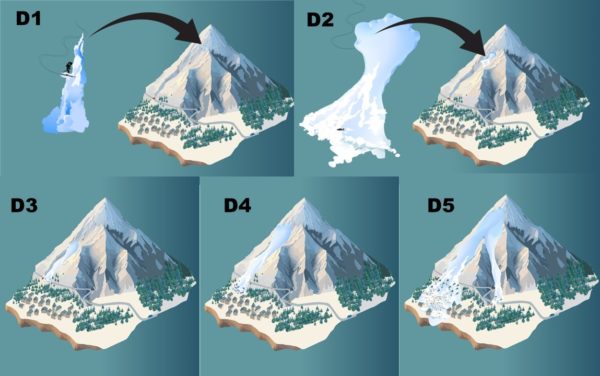An estimate of the destructive potential of moving avalanche debris, rated on a scale from 1 to 5.

This help chart shows the destructive potential for the D scale, and their typical lengths and deposit volumes used to estimate D-sizes. Credit: Bruce Jamieson
The destructive potential of avalanches is a function of the mass, speed, and density of avalanche debris paired with the length and cross-section of the avalanche path. Observers rate the size of an avalanche based on its destructive potential: D1 avalanches are harmless, D2 avalanches can injure or kill people, D3 avalanches can destroy a house or car, D4 avalanches can destroy buildings or mature forests, and D5 avalanches can gouge the landscape. Given the somewhat subjective nature of these descriptions, observers can further reference guidance defining typical mass, deposit volumes, impact pressures, and lengths to rate destructive size. While typical avalanche length is the easiest to quantify in the field, it is the least reliable measure of size. An avalanche of a given destructive size has a wide range of potential runout lengths, depending on the width and thickness of the avalanche and the characteristics of the terrain. 